
How clean is water on the Absheron Peninsula? Checking it for ourselves
The human body is made up of approximately 60% water. People have to drink enough water for their body systems to function properly.
Doctors usually recommend that adults drink 1.5 – 2 litres of water per day.
However, both the quantity and quality of the water we drink matter. And the quality of the water in which people swim and which is used for household needs is no less important.
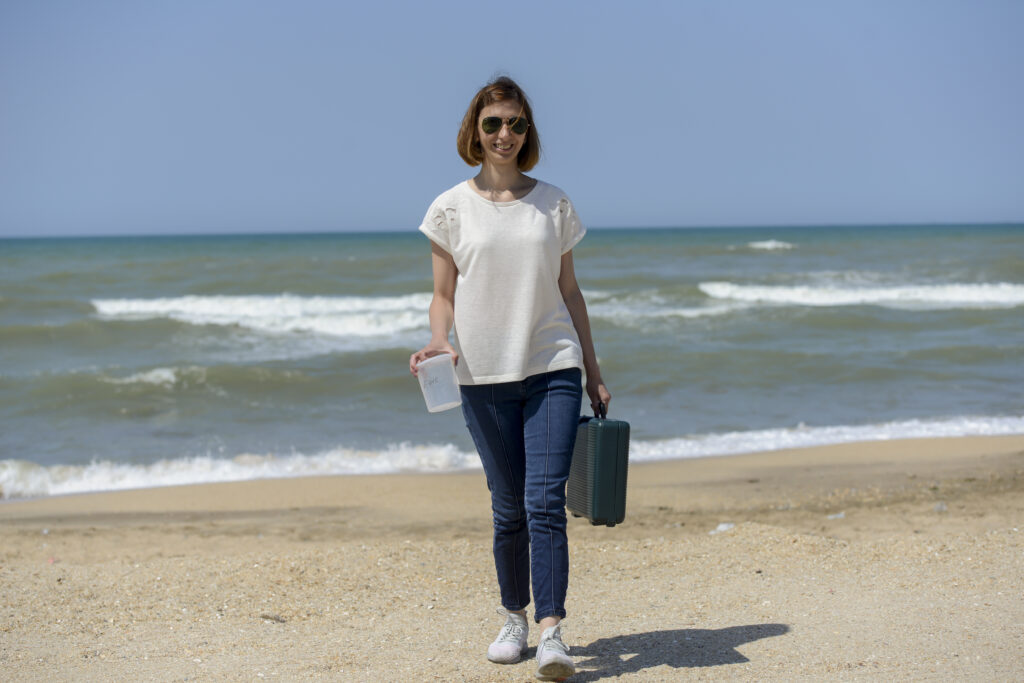 Testing water on the Absheron Peninsula
Testing water on the Absheron Peninsula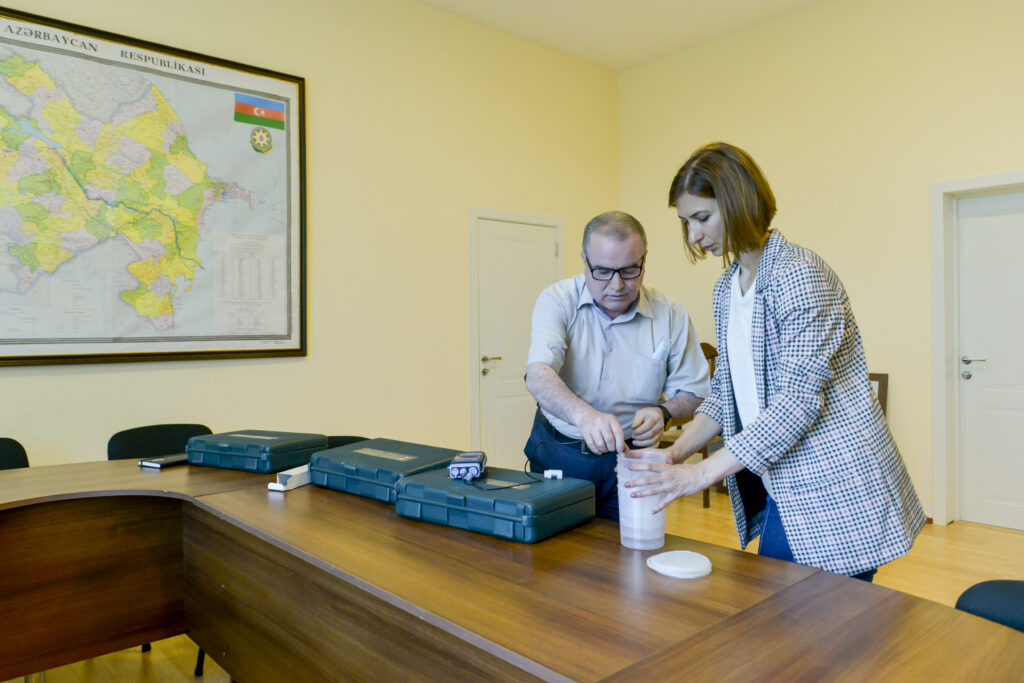 Visiting the National Hydrometeorological Service at the Ministry of Ecology and Natural Resources of Azerbaijan
Visiting the National Hydrometeorological Service at the Ministry of Ecology and Natural Resources of Azerbaijan Water testing training
Water testing training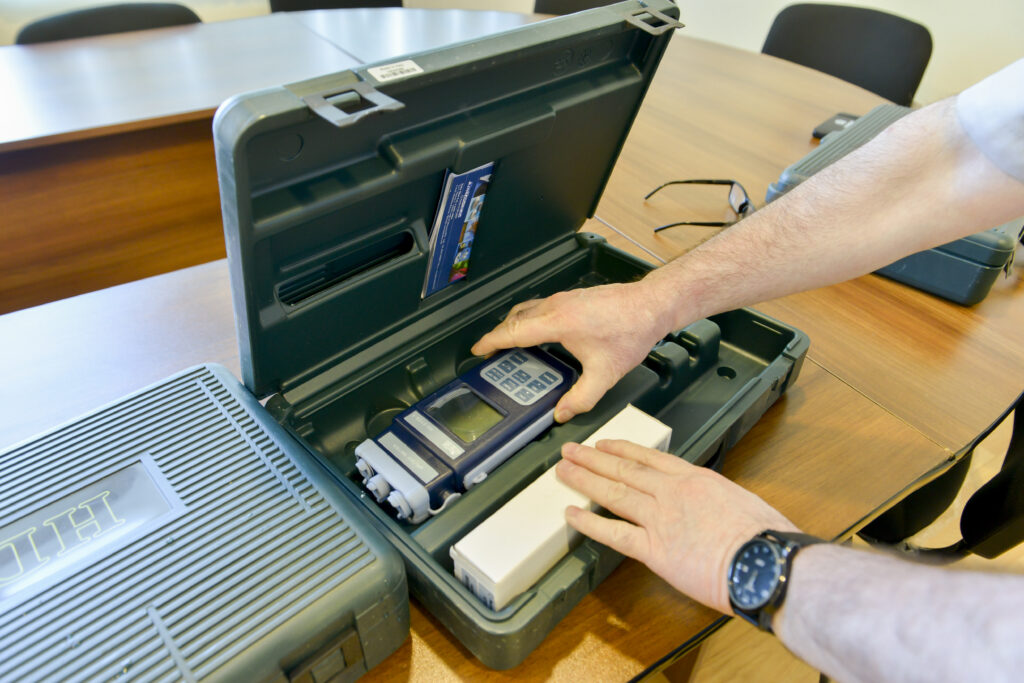 The rapid test kits
The rapid test kits Heading to the Absheron Peninsula for water testing
Heading to the Absheron Peninsula for water testing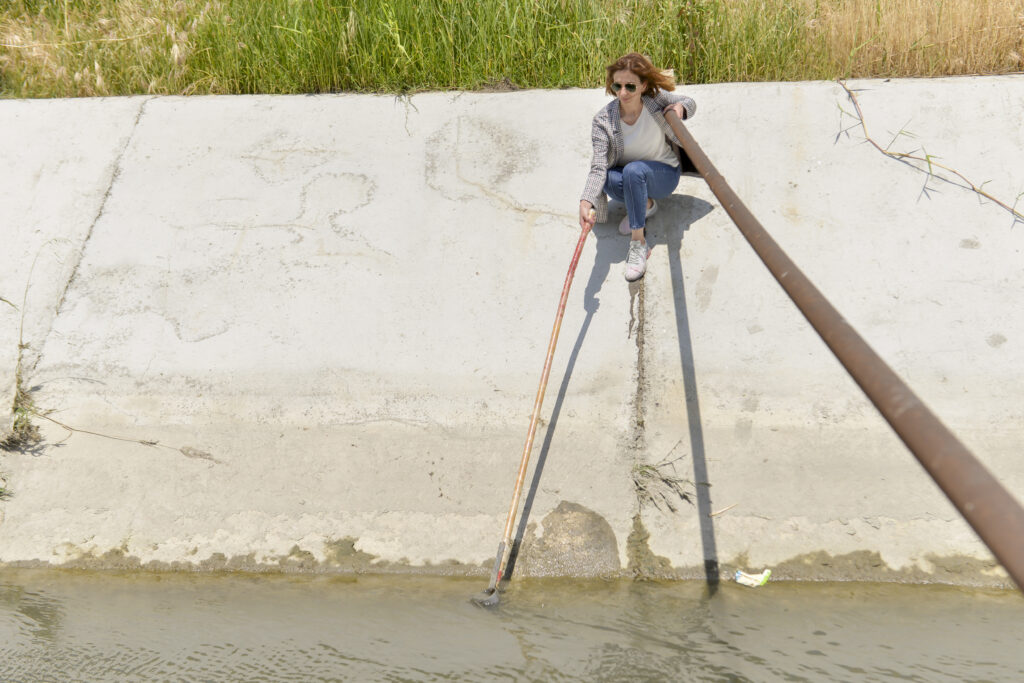 Testing water quality at the Absheron irrigation channel
Testing water quality at the Absheron irrigation channel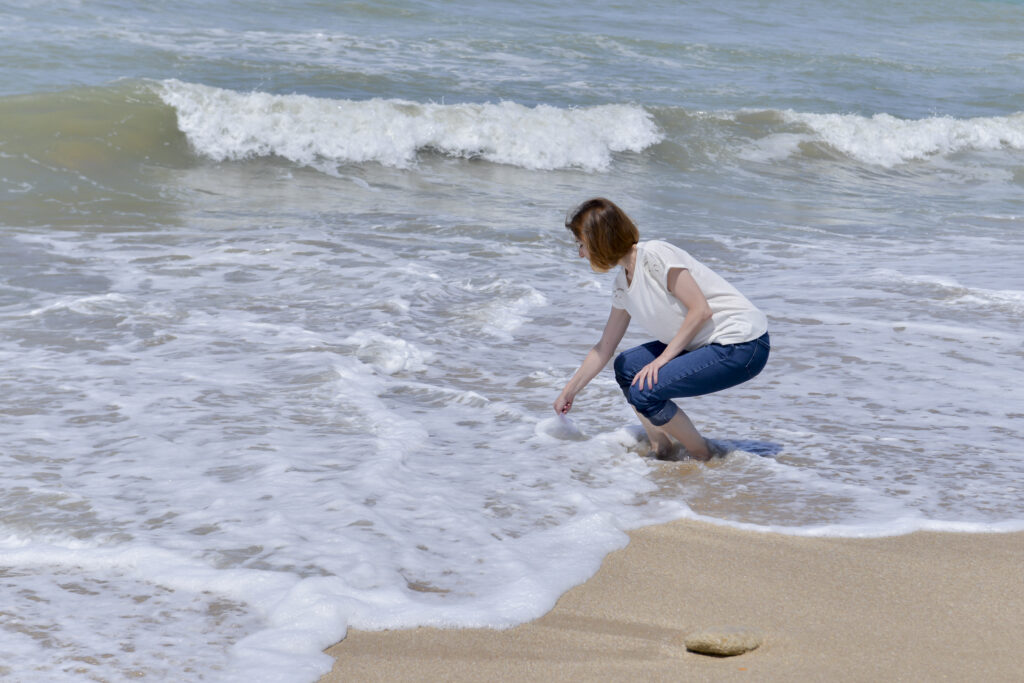 The journalist takes marine water for testing
The journalist takes marine water for testing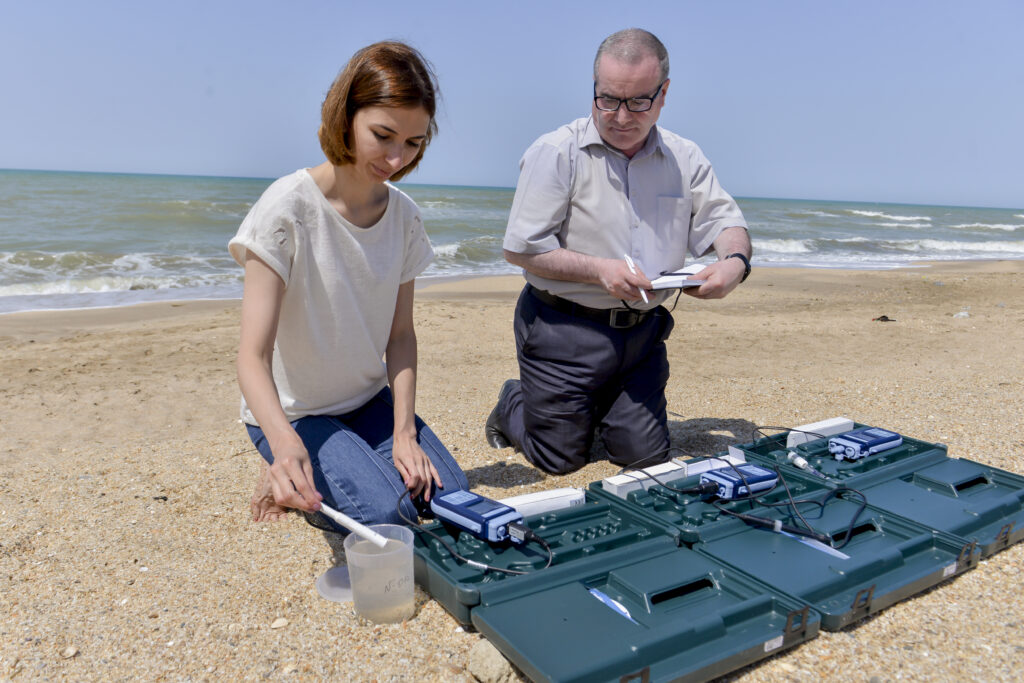 Testing marine water
Testing marine water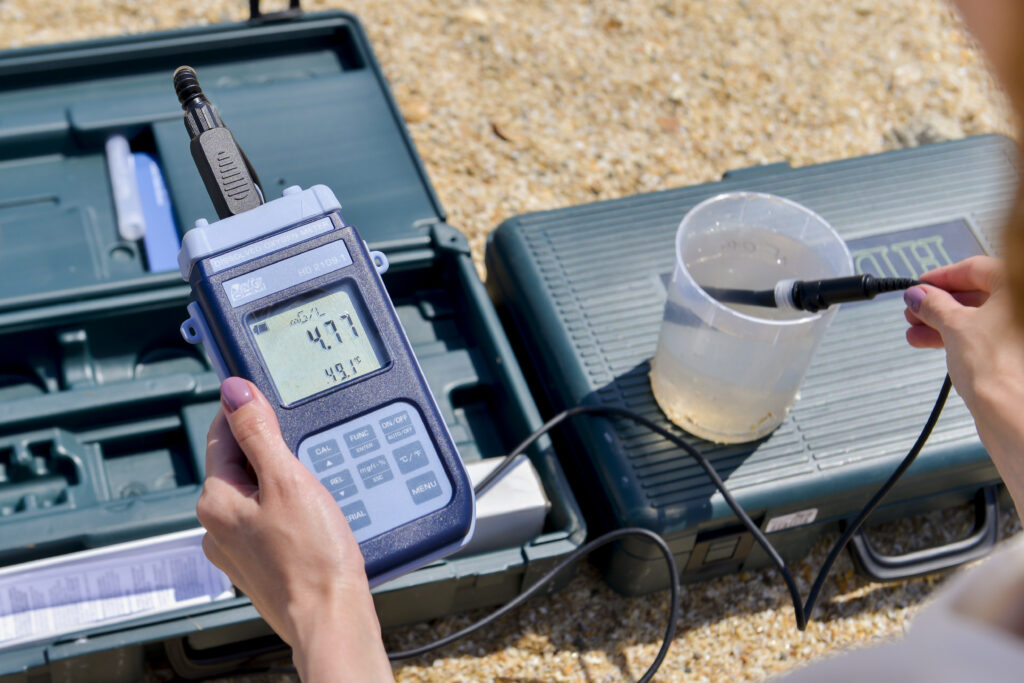 Analysing the results
Analysing the results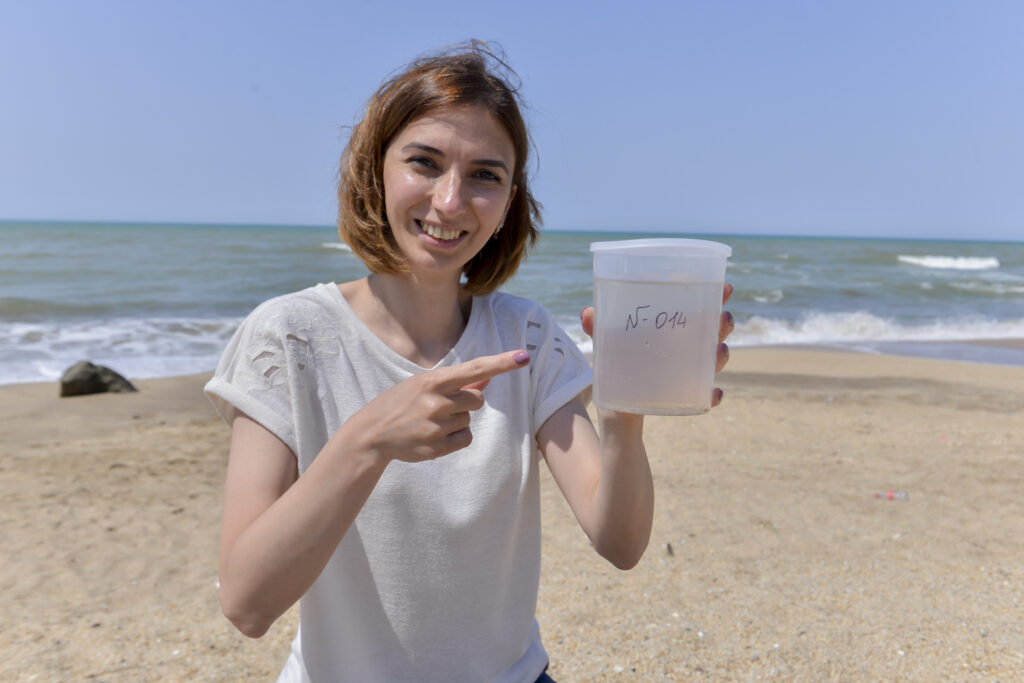 Water testing experiment
Water testing experiment
The standards of drinking water quality are high. One of the key requirements is the absence of chemical impurities, dirt, pathogenic bacteria, and viruses. Moreover, water has to have a proper acid-alkaline balance (pH) and a negative redox potential.
Water has to contain the appropriate levels of microelements, because their deficiency or excess may cause different diseases.
An experiment – testing water on the Absheron Peninsula
We decided to carry out an experiment by ourselves and to test drinking, irrigation, and marine water on the Absheron Peninsula.
We reached out to the National Hydrometeorological Service at the Ministry of Ecology and Natural Resources of Azerbaijan. It provided us with rapid test kits to measure the pH, electrical conductivity, and oxygen saturation of water.
There are also specific standards for coastal marine water, as well as the water used in agriculture.
 Testing water on the Absheron Peninsula with rapid test kit
Testing water on the Absheron Peninsula with rapid test kit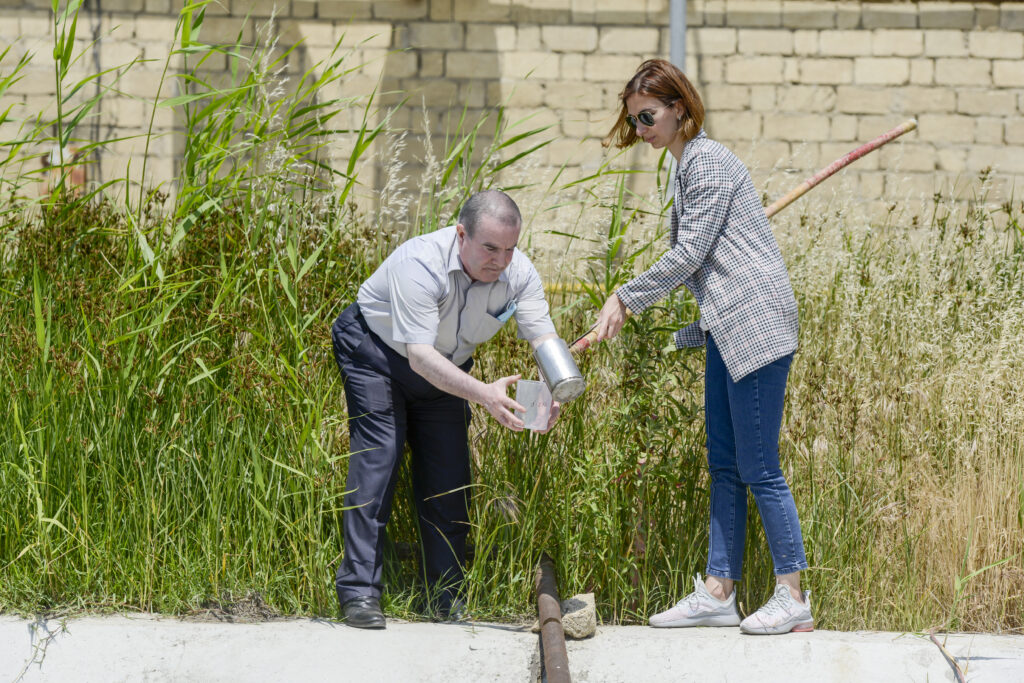 Testing water at the Absheron irrigation channel
Testing water at the Absheron irrigation channel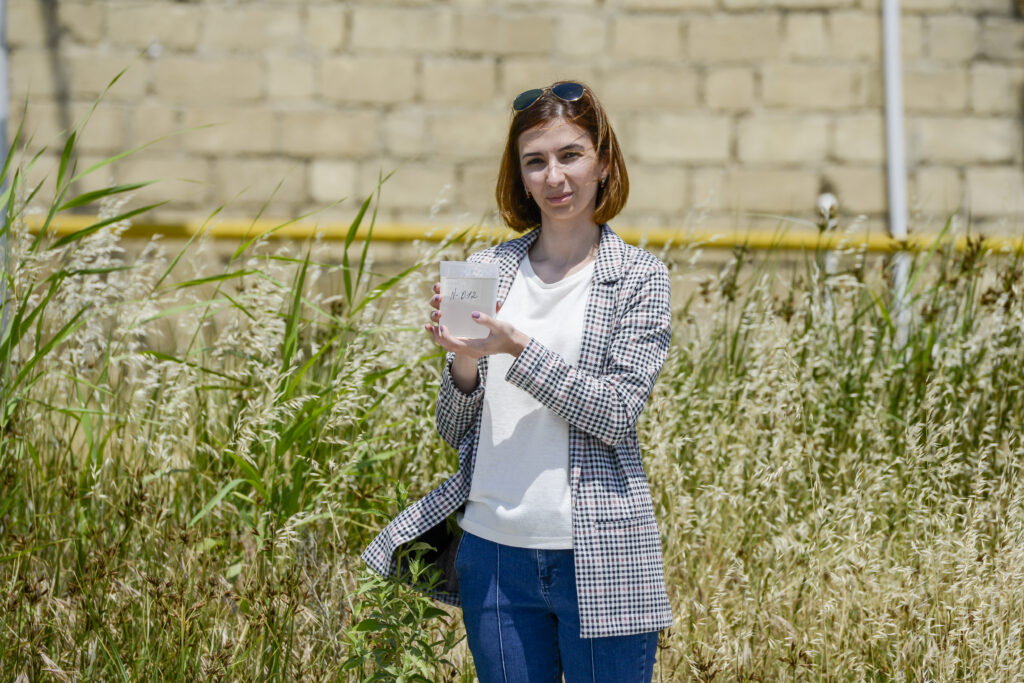 Colleting water samples at the Absheron irrigation channel
Colleting water samples at the Absheron irrigation channel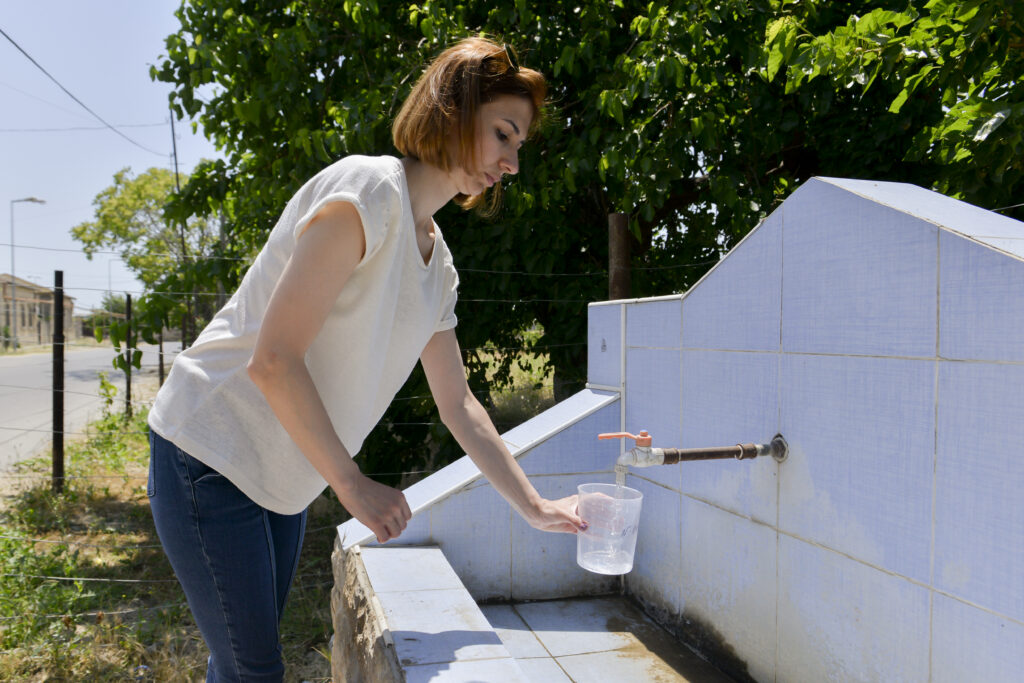 Testing drinking water at Mashtaga village
Testing drinking water at Mashtaga village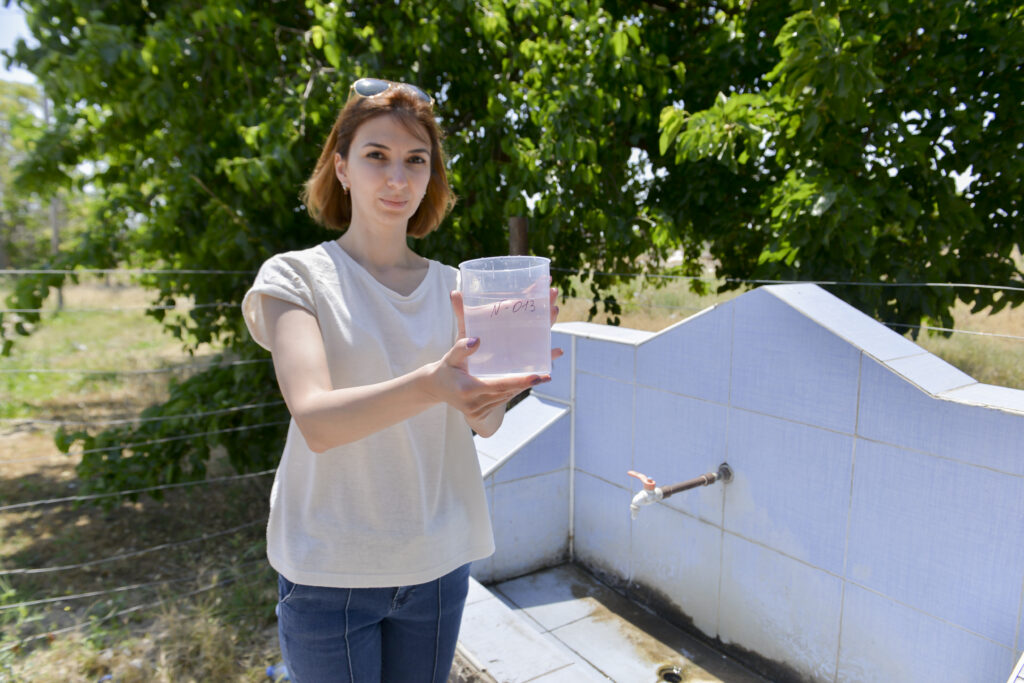 Collecting samples for testing at Mashtaga village
Collecting samples for testing at Mashtaga village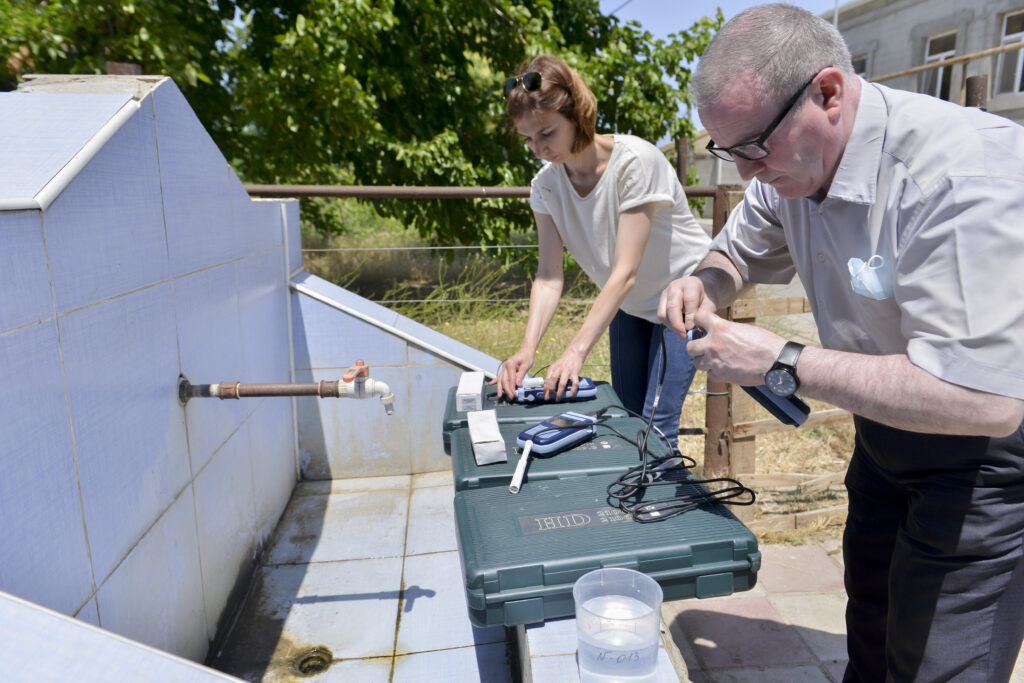 Testing drinking water at Mashtaga village
Testing drinking water at Mashtaga village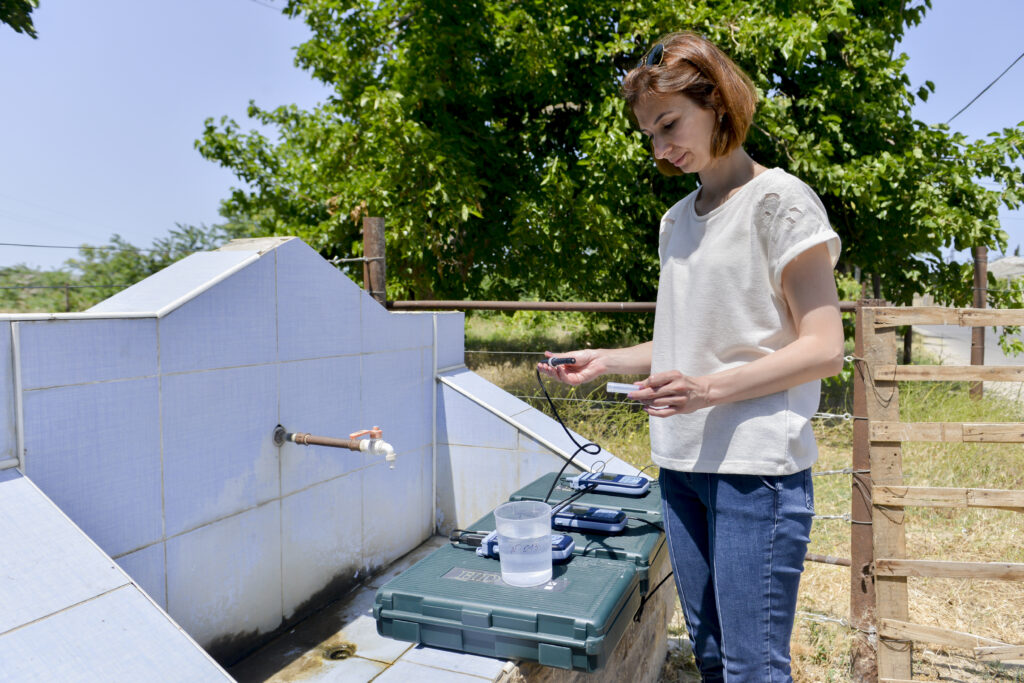 Testing drinking water
Testing drinking water Analysing the results
Analysing the results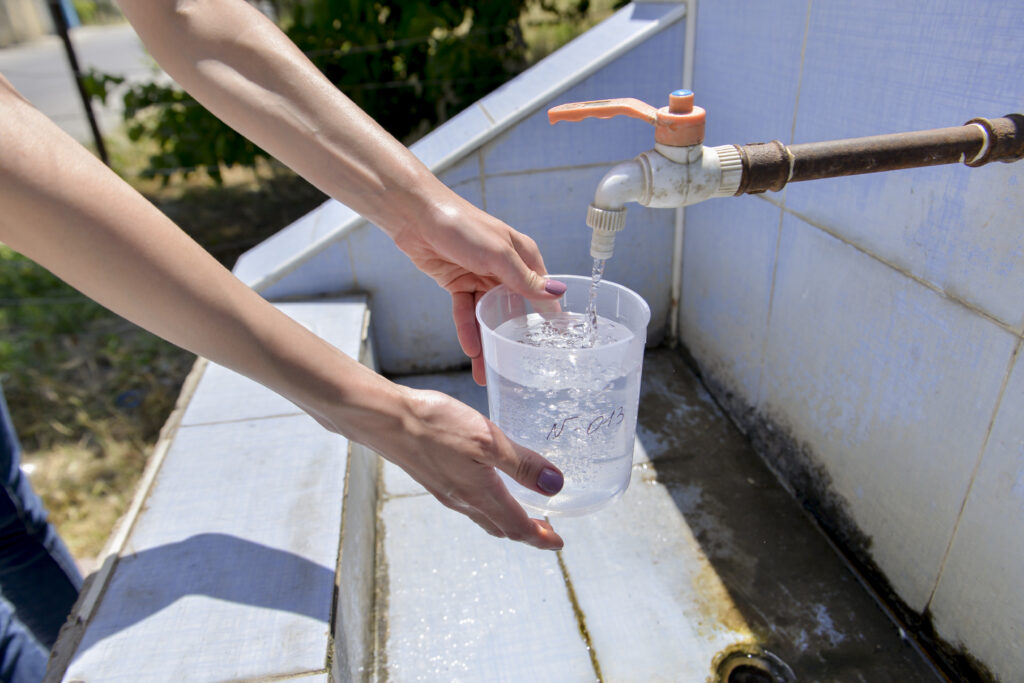 Testing drinking water at Mashtaga village
Testing drinking water at Mashtaga village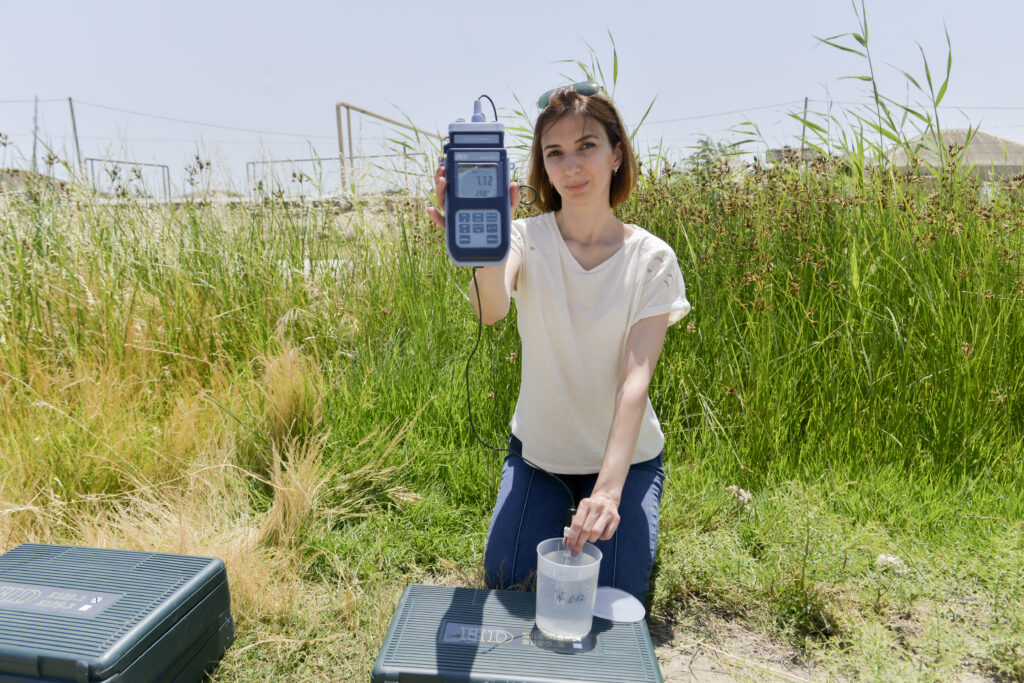 Water experiment at Absheron Peninsula
Water experiment at Absheron Peninsula
For testing, we chose the Absheron irrigation channel, whose water is used to irrigate farmlands across the Absheron Peninsula. We took water samples in Mashtaga, a settlement in Baku. We also tested drinking water from a public tap there. To test marine water, we chose a popular coast in Bilgah. With the beach season starting, higher priority is given to the quality of water for swimming.
Metanet Avazova, a chief adviser of the National Department for Environmental Monitoring at the National Hydrometeorological Service, noted that the low content of biogenic substances is a key indicator for irrigation water. The high concentration of these substances in water, in combination with nitrogen and phosphate fertilisers used in agriculture, may have a negative effect.
Marine water should not contain any pathogenic bacteria, such as coliform bacteria, including Escherichia coli. E. coli are part of the normal intestinal flora of people and animals. However, some of their strains can cause bacillary dysentery. The high concentration of these bacteria is also dangerous.
The results of our experiment
To interpret the results obtained, we reached out to AzeLab, a laboratory operating under the Ministry of Ecology and Natural Resources of Azerbaijan. Ramina Abdullayeva, a director of the laboratory, noted that, in general, the three indicators we received through testing drinking, irrigation, and marine (recreational) water, all meet the water quality standards.
“The optimum pH for drinking and household water is in the range of 6–9. The pH of the drinking water from the public tap is 8.28, the water from the Absheron irrigation channel – 7.65, and the marine water – 8.1. This means that the water from the three testing sites is sufficiently alkaline and is suitable for use,” said Abdullayeva.
“The oxygen saturation and the electrical conductivity of the tested water also meet the water quality standards. The oxygen saturation influences the rate of oxidation processes and the development of organisms in water, while the electrical conductivity has an effect on the absorption of nutrients from water by plants and the provision of optimal conditions for their growth,” added the expert. “The water samples do not have a pronounced odour and colour. This is a positive indicator, because it means that the water does not contain any harmful impurities.”
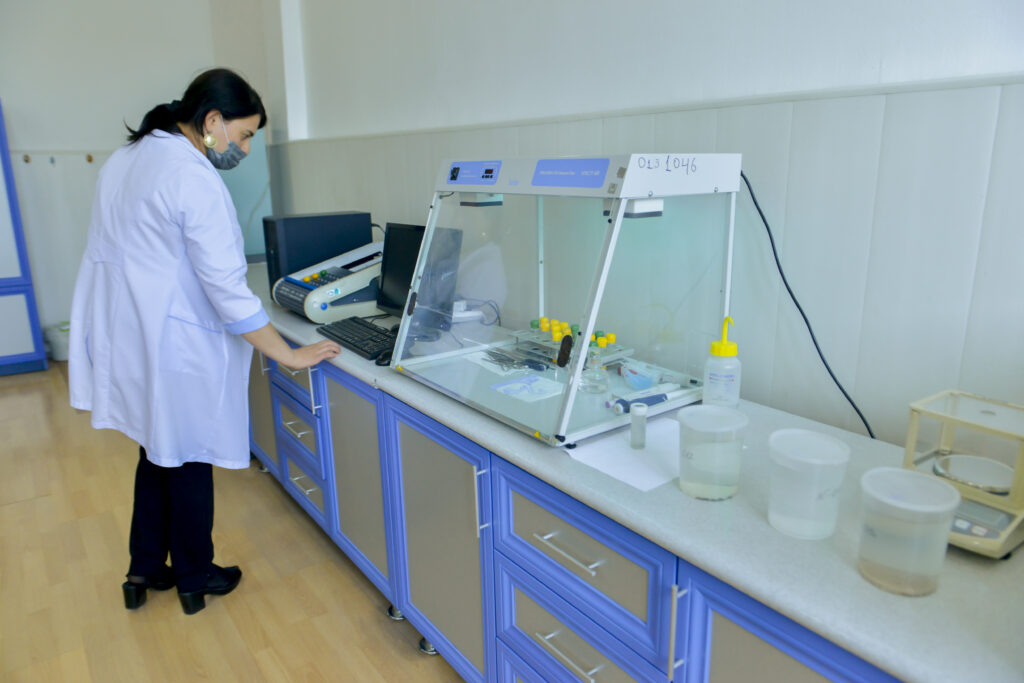 Water analysis at the laboratory
Water analysis at the laboratory Delivery of samples to the laboratory for comprehensive check
Delivery of samples to the laboratory for comprehensive check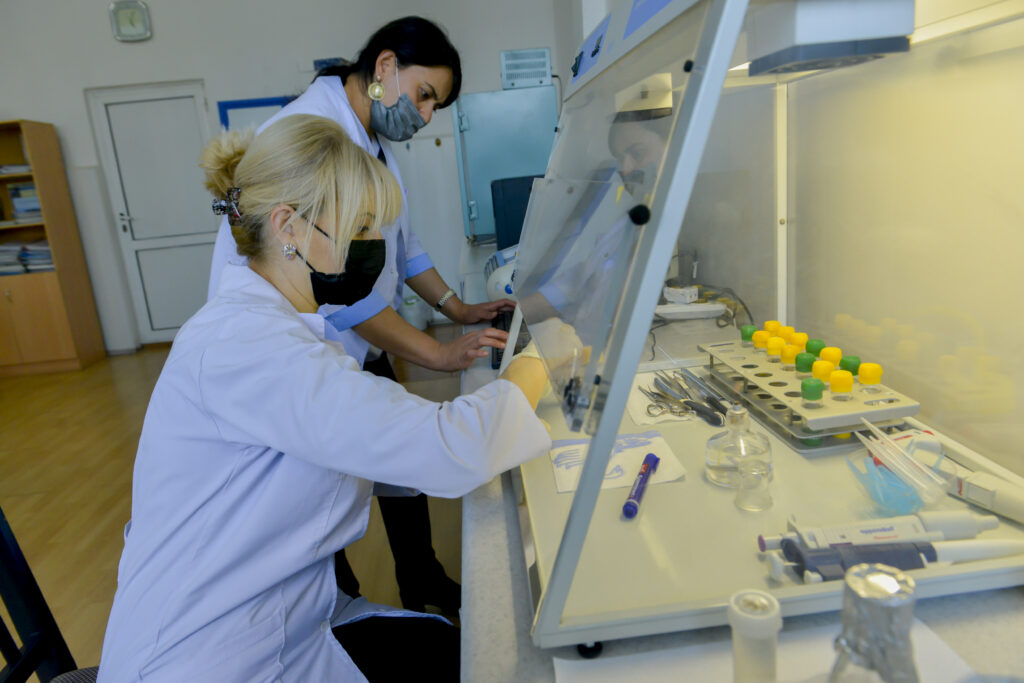 The laboratory staff analyses the results
The laboratory staff analyses the results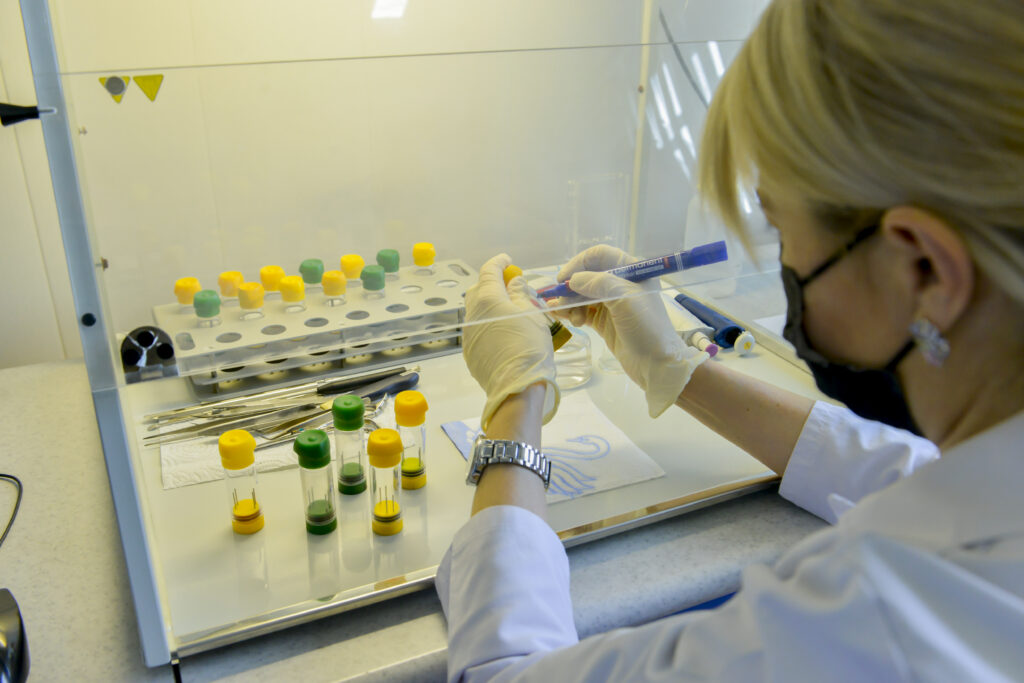 Water analysis at the laboratory
Water analysis at the laboratory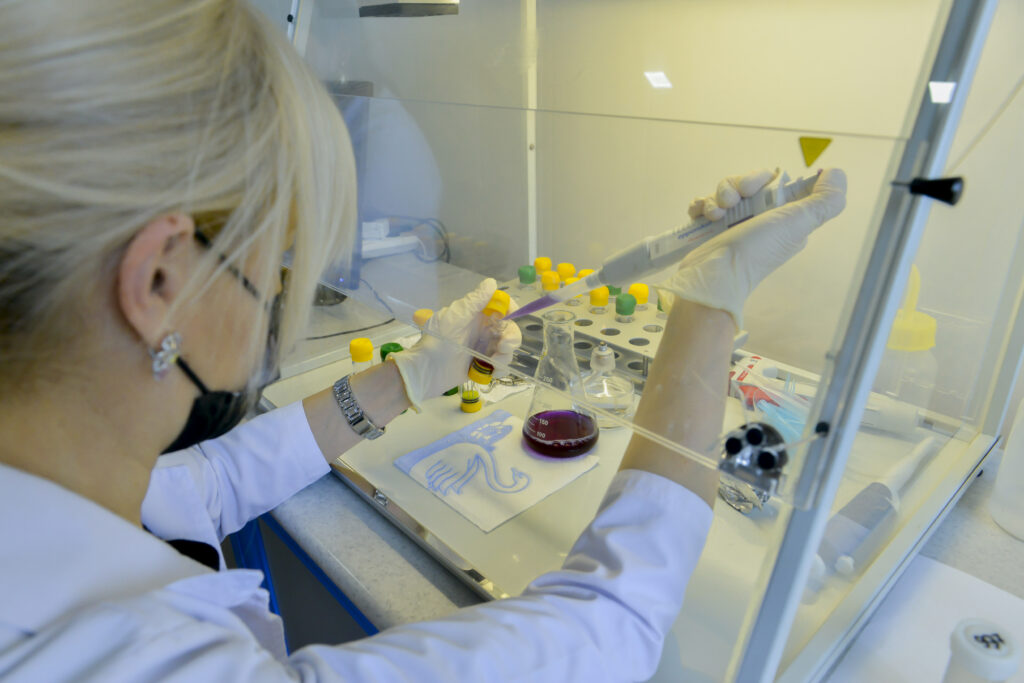 Analysing the results at the laboratory
Analysing the results at the laboratory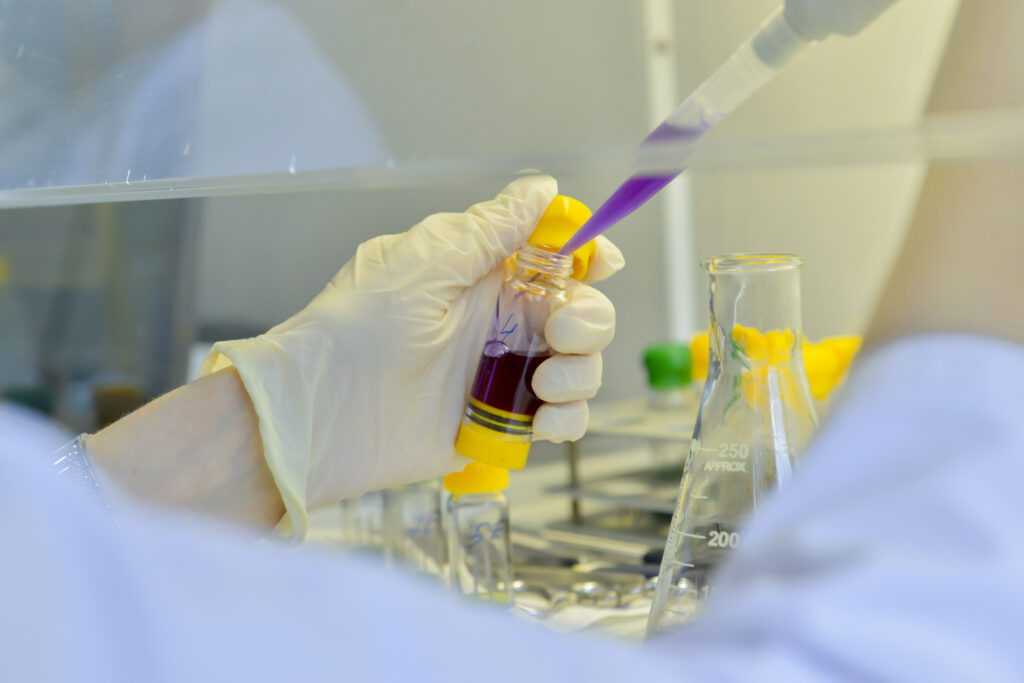 Waiting for the results
Waiting for the results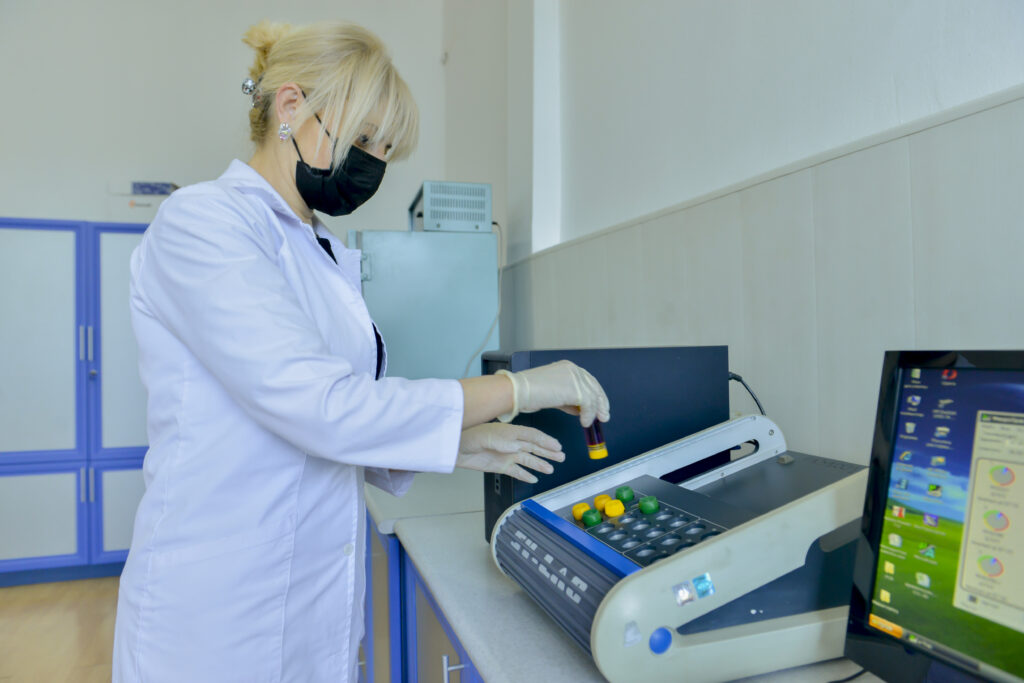 The samples are analysed at the laboratory
The samples are analysed at the laboratory
However, rapid test kits are not sufficient for a fully-fledged analysis of water quality. To test water more fully, detailed laboratory analysis is needed. That is why we left the water samples at the laboratory for two days.
Finally, we received the detailed results, which did not identify any serious problems with the three types of water. Nevertheless, there were some upsetting indicators. In particular, the level of E. coli in marine water samples taken in Bilgah was at the upper limit of normal. This is caused by the discharge of untreated wastewater into the Caspian Sea.
However, as the laboratory’s director noted, E. coli can be present in marine water at acceptable levels, because they are part of the normal intestinal flora of people and animals. The installation of treatment facilities, which could remove pollutants from wastewater before it comes into the sea, can help decrease the levels of the bacteria.
“In general, I can say that the analysis of the water samples indicates that the public tap water is suitable for drinking, the channel water is suitable for soil irrigation, and the marine water is suitable for recreation,” Abdullayeva concluded.
 Ramina Abdullayeva, a director of the laboratory
Ramina Abdullayeva, a director of the laboratory Ramina Abdullayeva
Ramina Abdullayeva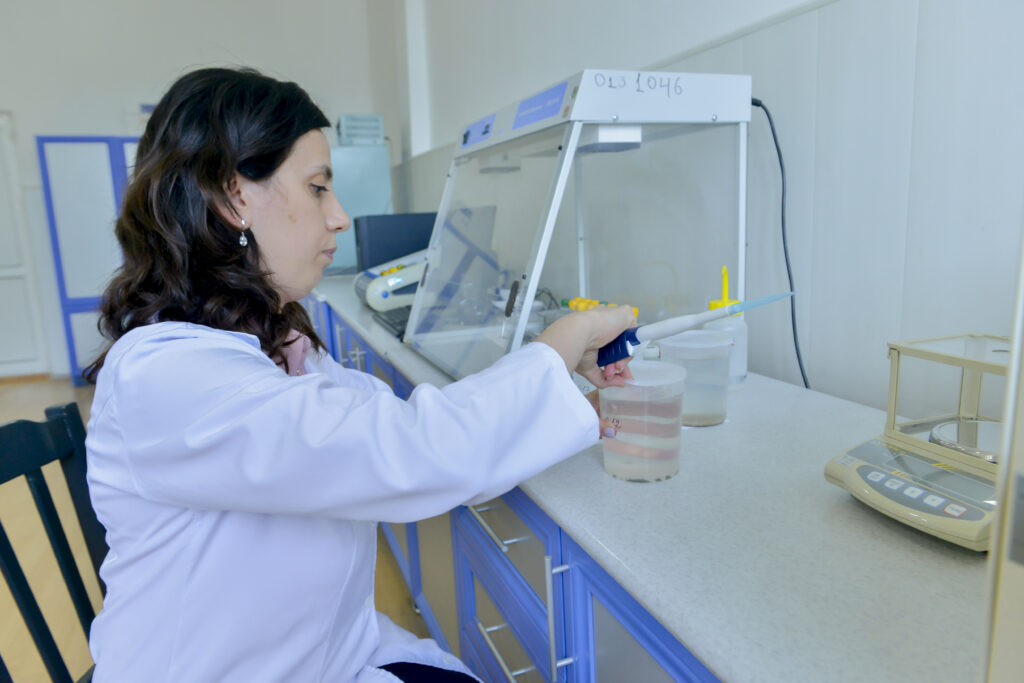 Ramina Abdullayeva during the water testing
Ramina Abdullayeva during the water testing
The acceptable indicators for drinking, irrigation, and marine water on the Absheron Peninsula cannot reflect the water quality indicators for all the water bodies across Azerbaijan. The water bodies are mainly transboundary and inland rivers, and their environmental status is far from ideal.
According to experts, the transboundary rivers Kura and Aras, starting in neighbouring countries, are strongly polluted in the upper course and come into Azerbaijan with a poor environmental status. There are also problems related to inland rivers – their status in mountain regions is good, but after they have flowed through settlements and industrial centres, their water quality strongly degrades.
What is done to improve water quality?
The AzeLab laboratory took part in the European Union Water Initiative Plus for the Eastern Partnership Countries (EUWI+ 4 EaP). Launched in 2016, the project renovated the laboratory and provided it with new equipment. This enabled the laboratory to carry out a wider range of tests for water, air, and soil, which will promote the reduction of risks related to the adverse effect of pollutants on people and ecosystems.
“Monitoring is a key component of water resource management, because it helps us identify the accurate environmental status of a water body,” said Rafig Verdiyev, a water management expert and EUWI+ country representative in Azerbaijan.
According to the expert, in Azerbaijan, the environmental status of water was traditionally evaluated, mainly based on its chemical composition – this practice had been preserved since the times of the Soviet Union. However, the adoption of the EU’s best practices has resulted in the biological and hydromorphological analyses of water, alongside the chemical analysis. This provides a fuller picture of the water status and the presence of living organisms in it.
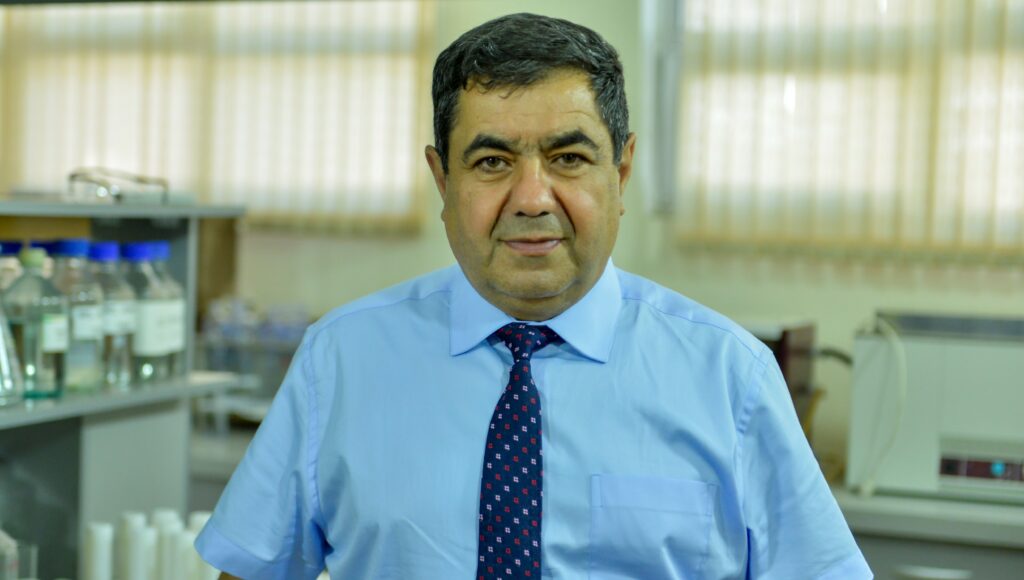 Rafig Verdiyev, EUWI+ country representative in Azerbaijan
Rafig Verdiyev, EUWI+ country representative in Azerbaijan
Rafig Verdiyev added that in addition to the laboratory in Baku, the project also reequipped two regional laboratory centres – in Gazakh and Beylagan. The new equipment for the laboratories, as well as trainings for their staff, carried out by international experts, will enable the laboratories to get accredited according to ISO quality standards.
In a more general context, the EUWI+ project aims to update the water resource management system in Azerbaijan and bring the country’s Water Code into line with the EU Water Framework Directive – a key document of the EU in the field of water policies.
Author: Elena Ostapenko
Article published in Azerbaijani and Russian by 1news.az
MOST READ
SEE ALSO

No, time is not on Russia‘s side

I have no regrets: the Azerbaijani women trained to clear mines
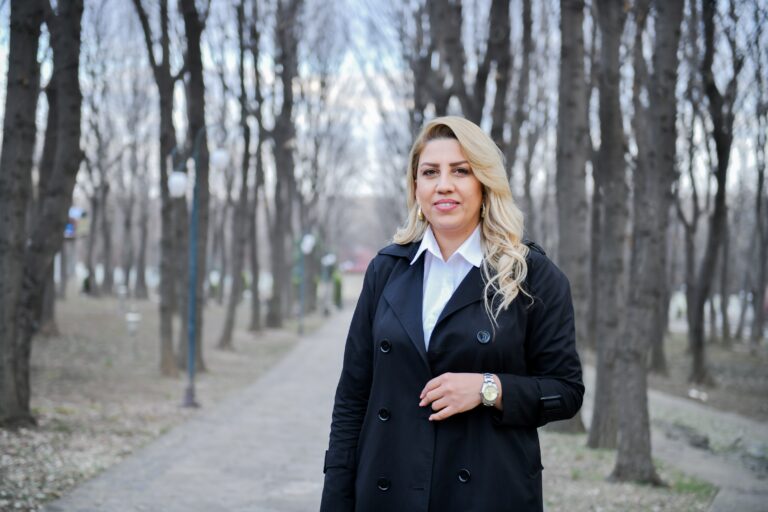
Turning a hobby into business: how Vusala Akhmadova from Tovuz helps women and children develop

Be one step ahead of a hacker: check simple cybersecurity tips!
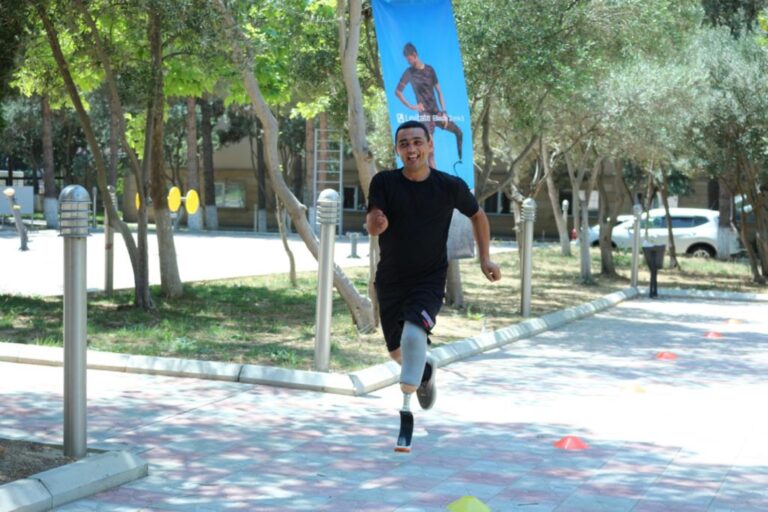
A chance for a better life: restoring justice for people with disabilities in Azerbaijan
More campaign pages:
Interested in the latest news and opportunities?
This website is managed by the EU-funded Regional Communication Programme for the Eastern Neighbourhood ('EU NEIGHBOURS east’), which complements and supports the communication of the Delegations of the European Union in the Eastern partner countries, and works under the guidance of the European Commission’s Directorate-General for Neighbourhood Policy and Enlargement Negotiations, and the European External Action Service. EU NEIGHBOURS east is implemented by a GOPA PACE-led consortium. It is part of the larger Neighbourhood Communication Programme (2020-2024) for the EU's Eastern and Southern Neighbourhood, which also includes 'EU NEIGHBOURS south’ project that runs the EU Neighbours portal.

The information on this site is subject to a Disclaimer and Protection of personal data. © European Union,







